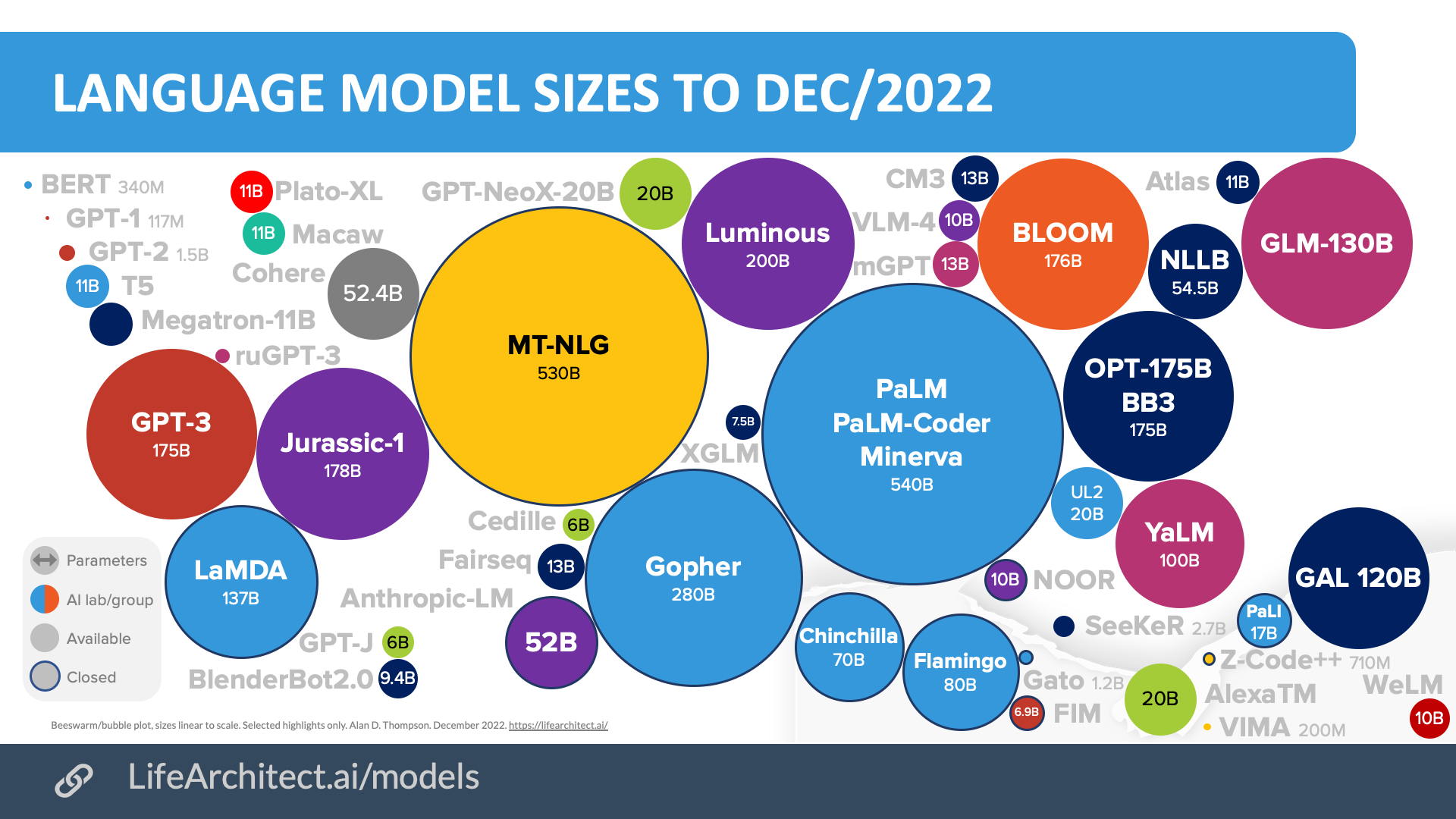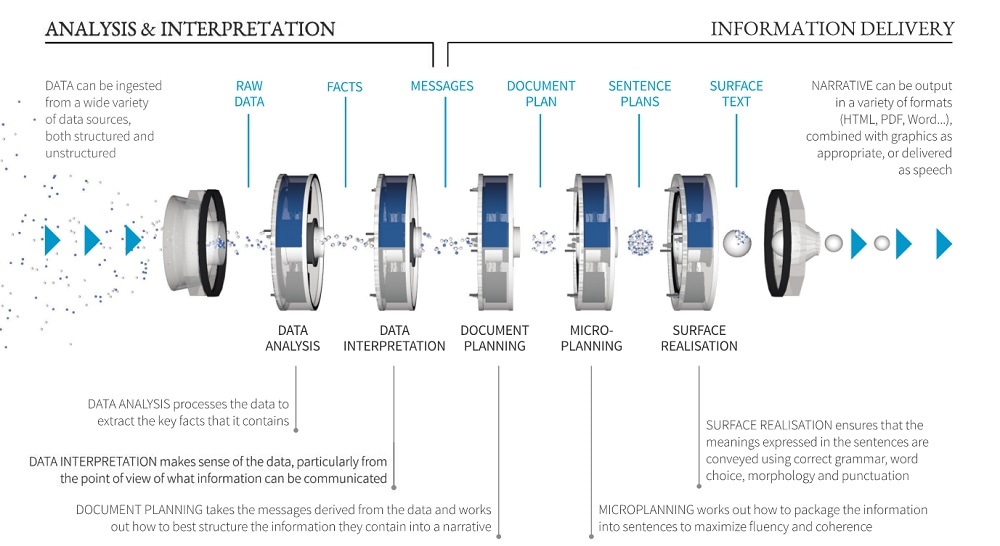Natural Language Generation (NLG)
YouTube ... Quora ...Google search ...Google News ...Bing News
- Natural Language Processing (NLP) ... Generation (NLG) ... Classification (NLC) ... Understanding (NLU) ... Translation ... Summarization ... Sentiment ... Tools
- Large Language Model (LLM) ... Multimodal ... Foundation Models (FM) ... Generative Pre-trained ... Transformer ... GPT-4 ... GPT-5 ... Attention ... GAN ... BERT
- Agents ... Robotic Process Automation ... Assistants ... Personal Companions ... Productivity ... Email ... Negotiation ... LangChain
- Artificial Intelligence (AI) ... Generative AI ... Machine Learning (ML) ... Deep Learning ... Neural Network ... Reinforcement ... Learning Techniques
- Conversational AI ... ChatGPT | OpenAI ... Bing/Copilot | Microsoft ... Gemini | Google ... Claude | Anthropic ... Perplexity ... You ... phind ... Ernie | Baidu
- Development ... Notebooks ... AI Pair Programming ... Codeless ... Hugging Face ... AIOps/MLOps ... AIaaS/MLaaS
- The Future of Writing, With Robots | Garrett Grams
- Using Natural Language Processing for Smart Question Generation | Aditya S -Intel AI Academy
- Neural text generation: How to generate text using conditional language models | Neil Yager
- Narrative Science Systems: A Review | P. Sarao, P. Mittal, R. Kaur
- ToTTo: A Controlled Table-To-Text Generation Dataset | A. Parikh, X. Wang, S. Gehrmann, M. Faruqui, B. Dhingra, D. Yang, and D. Das - arXiv - Cornell Univarsity
- Natural Language Generation: The Future of Content Management | Heidi Unruh - e-Sprint
- Defined: Natural Language Generation | Mary Grace Glascott - Narrative Science - Medium
Natural-language generation (NLG) is the natural-language processing task of generating natural language from a machine-representation system such as a knowledge base or a logical form. Psycholinguists prefer the term language production when such formal representations are interpreted as models for mental representations. It could be said an NLG system is like a translator that converts data into a natural-language representation. However, the methods to produce the final language are different from those of a compiler due to the inherent expressivity of natural languages. ...NLG may be viewed as the opposite of natural-language understanding: whereas in natural-language understanding, the system needs to disambiguate the input sentence to produce the machine representation language, in NLG the system needs to make decisions about how to put a concept into words. Wikipedia

Inside language models (from GPT-3 to PaLM) | Alan-D-Thompson ... PaLM
Benefits of Using Natural Language Generation (NGL): | Heidi Unruh - e-Sprint
- Deliver Better Digital Experiences at Scale - benefits from high-quality, personalized copy that no human author would create ad hoc or cost efficiently. This helps get better search engine visibility leading to an increase in organic traffic, while also increasing engagement and dwell time.
- Reduce Spend while Driving Efficiency - content authors are relieved from repetitive, routine tasks and can focus on their other projects, with more time for creativity, strategy, and exploration. Meanwhile, the organization can increase content output without additional human resources. It can also minimize translation costs, as multiple output languages can be generated simultaneously.
- Increase Content Quality - ensures that spelling, grammar, and structure are correct without the need for review and approval. It also supports the use of the corporate verbal brand as it relates to specific words, voice, and tone.

Different variations of NLG: | Mary Grace Glascott - Narrative Science - Medium
- Advanced NLG: communicates the way humans do — infusing intelligence and intent into the process from the very beginning. It assesses the data to identify what is important and interesting to a specific audience, then automatically transforms those insights into Intelligent Narratives — insightful communications packed with audience-relevant information, written in conversational language. Backed by a knowledge base, Advanced NLG systems understand the domain and can write contextually about a user’s business at a scale that is not possible by humans.
- Templated NLG: Here, the user is responsible for writing templates, determining how to join ideas and interpreting the output. Essentially sentence building, it relies on business rules, basic calculations (ex: sum) and templates with boilerplate text to automate content. Templated systems are limited in their ability to draw from multiple data sources, perform advanced analytics, achieve reusability from one project to the next and explain how it came to the story it created, with no understanding of what the user is trying to communicate or their particular domain.
- Basic NLG: automatically translates data into text via Excel-like functions. An example of this would be a mail merge that restates numbers into language.

- Artificial intelligence in healthcare: an interview with Dr Ehud Reiter | News Medical Life Sciences
- Arria NLG Engine

Companies
- Abodit Natural Language Engine for .NET
- Arria
- Article Forge
- Automated Insights Wordsmith
- AX Semantics
- Digital Reasoning
- EY Ernst & Young Global Limited
- IBM Cognos Analytics
- Labsense
- Linguastat
- Marlabs mAdvisor
- Microsoft Semantic Machines
- Narrative Science Quill
- OnlyBoth
- Outlier
- PhraseTech
- Qlik
- Retresco
- Salesforce Einstein Analytics platform
- SAP Analytics Cloud
- Specifio
- Syllabs
- textengine.io
- Textio
- vPhrase Phrazor
- yseop